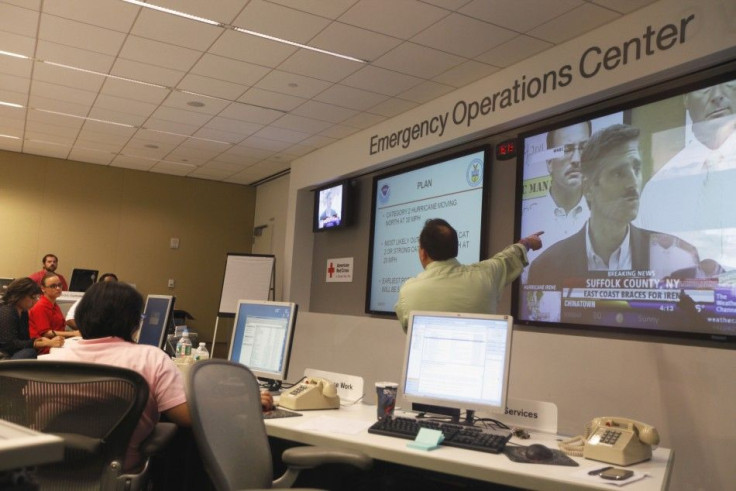Irene to Hit Cities, Resorts on East Coast

North Carolina braced on Friday for a direct hit from Hurricane Irene, cities along the east coast were on alert and millions of beach goers cut short vacations to escape the powerful storm.
With more than 50 million people potentially in Irene's path, residents stocked up on food and water and worked to secure homes, vehicles and boats. States, cities, ports, industries, oil refineries and nuclear plants scrambled to activate emergency plans.
I filled my tank up with gas in case I need to leave in a hurry or something, and get a lot of food supplies, taking everything out of my yard ... anything that can fly into a window, said Patricia Stapleton of Newport, North Carolina.
Irene, a major Category 3 hurricane, lashed the low-lying Bahamas on Thursday and was expected to hit North Carolina on Saturday before heading up the coast to New York and beyond.
At 2 a.m. EDT, Irene had sustained winds of 115 miles per hour (185 km per hour) and its center was about 460 miles south-southwest of Cape Hatteras, North Carolina.
Coastal evacuations were under way in North Carolina and were ordered for beach resorts in Virginia, Delaware and Maryland. Airlines began to cut flights at eastern airports, made plans to move aircraft from the region and encouraged travelers to consider postponing trips.
After hitting North Carolina, Irene is expected to weaken to a still-dangerous Category 2 storm on the five-step Saffir-Simpson scale, with winds of up to 110 mph.
All the major metropolitan areas along the northeast are going to be impacted, National Hurricane Center Director Bill Read told Reuters Insider. Being a large hurricane, tropical storm-force winds will extend far inland.
'HORRENDOUS DAY FOR TRAVEL'
Virginia Governor Bob McDonnell urged residents to seek shelter by Friday night, before the winds kick up.
Saturday is going to be a horrendous day for travel. There will be roads and bridges closed, he said.
Anticipating severe storm damage in North Carolina, U.S. President Barack Obama declared an emergency on Thursday, authorizing federal aid to support that state's response. The governors of North Carolina, Virginia, Maryland, Delaware, New Jersey, New York and Connecticut also declared emergencies.
Even if the center of Irene stays offshore as it tracks up the coast, its heavy winds and rain could lash cities like Washington, Baltimore, Philadelphia and New York and knock out power, forecasters said.
Irene will be the first hurricane to hit the U.S. mainland since Ike pounded Texas in 2008.
New York Mayor Michael Bloomberg said the most populous U.S. city was bracing for storm conditions and flooding starting on Sunday.
He urged residents of vulnerable areas to move to safety on Friday because the mass transit system, the nation's biggest with 8 million passengers a day, may have to shut if flooding or high winds endanger its buses, subways and commuter trains.
Many New Yorkers do not have cars, so mass transit could be vital in evacuations.
Long Island, the populous area that extends about 100 miles east into the Atlantic Ocean from New York City, could be hit hard if Irene stays on its current track.
In Washington, Irene forced the postponement of Sunday's dedication ceremony for the new memorial honoring civil rights leader Martin Luther King Jr. Tens of thousands of people, including Obama, had been expected to attend.
Flooding from Irene killed at least one person in Puerto Rico and two in the Dominican Republic. The storm knocked out power in the Bahamian capital Nassau and blocked roadways with fallen trees.
© Copyright Thomson Reuters 2024. All rights reserved.





















